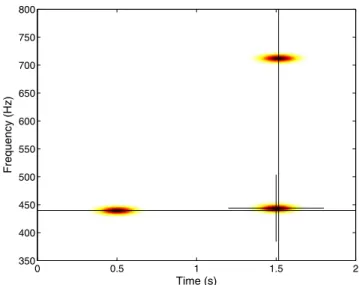Publisher’s version / Version de l'éditeur:
Physical Review Letters, 114, 6, 2015-02-13
READ THESE TERMS AND CONDITIONS CAREFULLY BEFORE USING THIS WEBSITE. https://nrc-publications.canada.ca/eng/copyright
Vous avez des questions? Nous pouvons vous aider. Pour communiquer directement avec un auteur, consultez la première page de la revue dans laquelle son article a été publié afin de trouver ses coordonnées. Si vous n’arrivez pas à les repérer, communiquez avec nous à PublicationsArchive-ArchivesPublications@nrc-cnrc.gc.ca.
Questions? Contact the NRC Publications Archive team at
PublicationsArchive-ArchivesPublications@nrc-cnrc.gc.ca. If you wish to email the authors directly, please see the first page of the publication for their contact information.
NRC Publications Archive
Archives des publications du CNRC
This publication could be one of several versions: author’s original, accepted manuscript or the publisher’s version. / La version de cette publication peut être l’une des suivantes : la version prépublication de l’auteur, la version acceptée du manuscrit ou la version de l’éditeur.
For the publisher’s version, please access the DOI link below./ Pour consulter la version de l’éditeur, utilisez le lien DOI ci-dessous.
https://doi.org/10.1103/PhysRevLett.114.069401
Access and use of this website and the material on it are subject to the Terms and Conditions set forth at
Comment on "human time-frequency acuity beats the Fourier
uncertainty principle"
Thekkadath, G. S.; Spanner, Michael
https://publications-cnrc.canada.ca/fra/droits
L’accès à ce site Web et l’utilisation de son contenu sont assujettis aux conditions présentées dans le site LISEZ CES CONDITIONS ATTENTIVEMENT AVANT D’UTILISER CE SITE WEB.
NRC Publications Record / Notice d'Archives des publications de CNRC:
https://nrc-publications.canada.ca/eng/view/object/?id=ca9f5091-2658-449e-b08e-b071712acbf0 https://publications-cnrc.canada.ca/fra/voir/objet/?id=ca9f5091-2658-449e-b08e-b071712acbf0Comment on “Human Time-Frequency Acuity Beats the Fourier Uncertainty Principle”
The Gabor limit [1],
ΔtΔf ≥ 1
4π; ð1Þ
refers to the lower bound on the product of the standard deviations (STD) in time (Δt) and frequency (Δf) of an audio signal. This limit is a consequence of the Fourier uncertainty principle. In their Letter, Oppenheim and Magnasco [2] claim that human hearing can surpass this limit. They design an experiment which establishes psycho-logical limens, δt and δf, and show that their subjects can discriminate signals that beat a limen-based uncertainty
δtδf ≥ 1
4π: ð2Þ
The frequency and time limens used by the authors relate to the accuracy with which human participants can distinguish small frequency and time shifts present in a sequence of three test pulses. The sequence in question is referred to as “Task 5” in the Letter. It is our view that their experiment is ill chosen to test Fourier uncertainty.
First, the Δt and Δf that appear in the Gabor limit must be the STD of time and frequency evaluated over the whole test signal. This point is made clear in the derivation of the uncertainty principle that can be found in the book of Cohen [3] (Secs. 3.2 and 3.3). The limens used by the authors, however, are simply ad hoc parameters that relate to the STD of statistical errors made by the human participants when tasked with estimating frequency and timing shifts in the test signal, and are unrelated to the STD of time and frequency evaluated over the test signal. Therefore, the limen-based inequality Eq. (2) is in no way related to the actual Gabor limit Eq.(1), and there is no expectation that the limen-based inequality should be satisfied.
Second, one can straightforwardly use Fourier analysis itself to “beat” Task 5, which again demonstrates that Task 5 does not test for violations of Fourier uncertainty since any Fourier-based analysis would necessarily be limited by the uncertainty principle. One method is to use a window Fourier transform (WFT) to construct a spectro-gram given by
Fðf; t0Þ ¼
Z ∞
−∞
ei2πfte−½ðt−t0Þ2=2γ2XðtÞdt; ð3Þ
where XðtÞ is the pulse sequence and γ is the width of the window function. The γ is a free parameter that controls the aspect ratio of the individual signals as they appear in Fðf; t0Þ, and must be chosen to ensure that the signals do
not overlap in Fðf; t0Þ. This can be readily achieved by
setting γ equal to, for example, the temporal variance of the first pulse received in the pulse sequence. In Fig. 1, we show Fðf; t0Þ for the sequence of Gaussian pulses used in
Ref. [2]. Figure 1 clearly demonstrates that the function Fðf; t0Þ can be used to obtain all the frequency and time
shifts required to perform Task 5. When evaluating the WFT integral using a fast Fourier transform (FFT), the peak positions can be resolved to (at least) within one grid point in both frequency (df) and time (dt). For a sampling rate R and time range T, the grid spacings in the FFT are given by dt¼ 1=R and df ¼ 1=T. Therefore, the WFT would result in a limen-based uncertainty of δtδf¼ dtdf ¼ 1=ðRTÞ. Using R¼ 96 kHz and T ¼ 2 s, for example, we get δtδf¼ dtdf ¼ 5.2083 × 10−6 which is orders of
magni-tude smaller than 1=ð4πÞ ≈ 0.0796, and also orders of magnitude smaller than what was achieved by the human participants. Furthermore, since the WFT is a linear trans-form that can “beat” Task 5, we also conclude that Task 5 does not test for a necessity of nonlinear transforms in models of human hearing.
G. S. Thekkadath and M. Spanner
National Research Council of Canada
100 Sussex Drive, Ottawa, Ontario, Canada K1A 0R6 Received 4 June 2014; published 10 February 2015 DOI:10.1103/PhysRevLett.114.069401
PACS numbers: 43.60.+d, 43.66.+y, 87.19.L-[1] D. Gabor,Nature (London) 159, 591 (1947).
[2] J. N. Oppenheim and M. O. Magnasco,Phys. Rev. Lett. 110, 044301 (2013).
[3] L. Cohen, Time-Frequency Analysis (Prentice Hall PTR, Englewood Cliffs, NJ, 1995). Time (s) Frequency (Hz) 0 0.5 1 1.5 2 350 400 450 500 550 600 650 700 750 800
FIG. 1 (color online). Fðf; t0Þ for the Gaussian pulse train using
the parameters Dt¼ 0.01 s, Df ¼ 4 Hz, and σ ¼ 50 ms.
PRL 114, 069401 (2015) P H Y S I C A L R E V I E W L E T T E R S 13 FEBRUARY 2015week ending
